2-Acetyl-1H-pyrrole
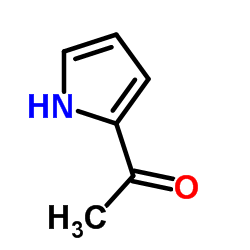
2-Acetyl-1H-pyrrole structure
|
Common Name | 2-Acetyl-1H-pyrrole | ||
|---|---|---|---|---|
| CAS Number | 1072-83-9 | Molecular Weight | 109.126 | |
| Density | 1.1±0.1 g/cm3 | Boiling Point | 220.9±13.0 °C at 760 mmHg | |
| Molecular Formula | C6H7NO | Melting Point | 88-93 °C(lit.) | |
| MSDS | Chinese USA | Flash Point | 92.4±27.3 °C | |
| Symbol |

GHS07 |
Signal Word | Warning | |
Use of 2-Acetyl-1H-pyrrole2-Acetylpyrrole is a product of model browning systems, and has been isolated as a major flavour component of many foods[1]. 2-Acetylpyrrole has been used in the synthesis of 2-acetyl-1-pyrroline[2]. |
| Name | 2-acetylpyrrole |
|---|---|
| Synonym | More Synonyms |
| Description | 2-Acetylpyrrole is a product of model browning systems, and has been isolated as a major flavour component of many foods[1]. 2-Acetylpyrrole has been used in the synthesis of 2-acetyl-1-pyrroline[2]. |
|---|---|
| Related Catalog | |
| References |
| Density | 1.1±0.1 g/cm3 |
|---|---|
| Boiling Point | 220.9±13.0 °C at 760 mmHg |
| Melting Point | 88-93 °C(lit.) |
| Molecular Formula | C6H7NO |
| Molecular Weight | 109.126 |
| Flash Point | 92.4±27.3 °C |
| Exact Mass | 109.052765 |
| PSA | 32.86000 |
| LogP | 0.88 |
| Vapour Pressure | 0.1±0.4 mmHg at 25°C |
| Index of Refraction | 1.531 |
| InChIKey | IGJQUJNPMOYEJY-UHFFFAOYSA-N |
| SMILES | CC(=O)c1ccc[nH]1 |
CHEMICAL IDENTIFICATION
HEALTH HAZARD DATAACUTE TOXICITY DATAMUTATION DATA
|
| Symbol |

GHS07 |
|---|---|
| Signal Word | Warning |
| Hazard Statements | H302-H315-H335 |
| Precautionary Statements | P261 |
| Personal Protective Equipment | dust mask type N95 (US);Eyeshields;Gloves |
| Hazard Codes | Xn: Harmful;Xi: Irritant; |
| Risk Phrases | R22 |
| Safety Phrases | S37/39-S26-S24/25 |
| RIDADR | NONH for all modes of transport |
| WGK Germany | 3 |
| RTECS | OB5970000 |
| HS Code | 2933990090 |
| Precursor 10 | |
|---|---|
| DownStream 10 | |
| HS Code | 2933990090 |
|---|---|
| Summary | 2933990090. heterocyclic compounds with nitrogen hetero-atom(s) only. VAT:17.0%. Tax rebate rate:13.0%. . MFN tariff:6.5%. General tariff:20.0% |
|
Approaches of aroma extraction dilution analysis (AEDA) for headspace solid phase microextraction and gas chromatography-olfactometry (HS-SPME-GC-O): Altering sample amount, diluting the sample or adjusting split ratio?
Food Chem. 187 , 44-52, (2015) Aroma extract dilution analysis (AEDA) is widely used for the screening of aroma-active compounds in gas chromatography-olfactometry (GC-O). In this study, three aroma dilution methods, (I) using diff... |
|
|
Extension of a dynamic headspace multi-volatile method to milliliter injection volumes with full sample evaporation: Application to green tea.
J. Chromatogr. A. 1421 , 103-13, (2015) An extension of multi-volatile method (MVM) technology using the combination of a standard dynamic headspace (DHS) configuration, and a modified DHS configuration incorporating an additional vacuum mo... |
|
|
Mutagen formation in the reaction of Maillard browning products, 2-acetylpyrrole and its analogues, with nitrite.
Food Chem. Toxicol. 24(12) , 1303-8, (1986) Three 2-substituted pyrroles (2-acetylpyrrole, pyrrole-2-carboxaldehyde and pyrrole-2-carboxylic acid), which are products of the Maillard browning reaction, were reacted with nitrite in buffer soluti... |
| 1-(1H-Pyrrol-2-yl)ethanone |
| 2-Pyrrolyl methyl ketone |
| Methyl pyrrol-2-yl ketone |
| Methyl 2-pyrrolyl ketone |
| Ethanone, 1-(1H-pyrrol-2-yl)- |
| Pyrrol-2-yl methyl ketone |
| 1-(2-Pyrrolyl)-1-ethanone |
| MFCD00005220 |
| 2-Acetyl pyrrole |
| EINECS 214-016-2 |
| 1-(1H-Pyrrol-2-yl)ethan-1-one |
| 2-Acetylpyrrole |
| 2-Acetyl-1H-pyrrole |
| ACETYL-2 PYRROLE |
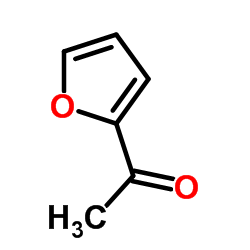 CAS#:1192-62-7
CAS#:1192-62-7 CAS#:109-97-7
CAS#:109-97-7 CAS#:127-19-5
CAS#:127-19-5 CAS#:75-36-5
CAS#:75-36-5 CAS#:56423-57-5
CAS#:56423-57-5 CAS#:108-24-7
CAS#:108-24-7![1-[1-(4-methylphenyl)sulfonylpyrrol-2-yl]ethanone Structure](https://image.chemsrc.com/caspic/391/129666-99-5.png) CAS#:129666-99-5
CAS#:129666-99-5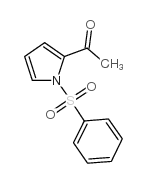 CAS#:86688-88-2
CAS#:86688-88-2![2-(2-methylbenzo[d][1,3]oxathiol-2-yl)-1H-pyrrole Structure](https://image.chemsrc.com/caspic/301/112816-55-4.png) CAS#:112816-55-4
CAS#:112816-55-4 CAS#:67-64-1
CAS#:67-64-1 CAS#:39741-41-8
CAS#:39741-41-8 CAS#:5930-93-8
CAS#:5930-93-8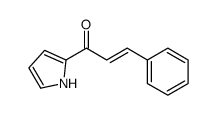 CAS#:22563-48-0
CAS#:22563-48-0![1-[1-[(4-fluorophenyl)methyl]pyrrol-2-yl]ethanone structure](https://image.chemsrc.com/caspic/251/251924-61-5.png) CAS#:251924-61-5
CAS#:251924-61-5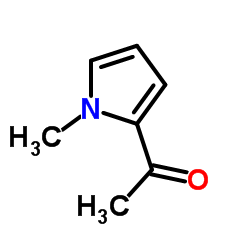 CAS#:932-16-1
CAS#:932-16-1 CAS#:634-97-9
CAS#:634-97-9 CAS#:13138-72-2
CAS#:13138-72-2 CAS#:1072-82-8
CAS#:1072-82-8 CAS#:32116-25-9
CAS#:32116-25-9
